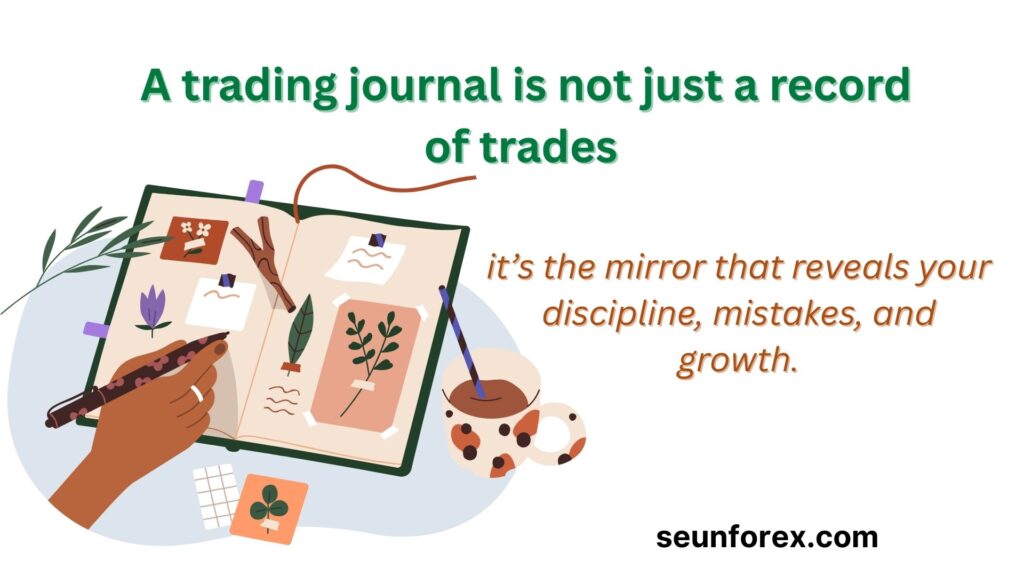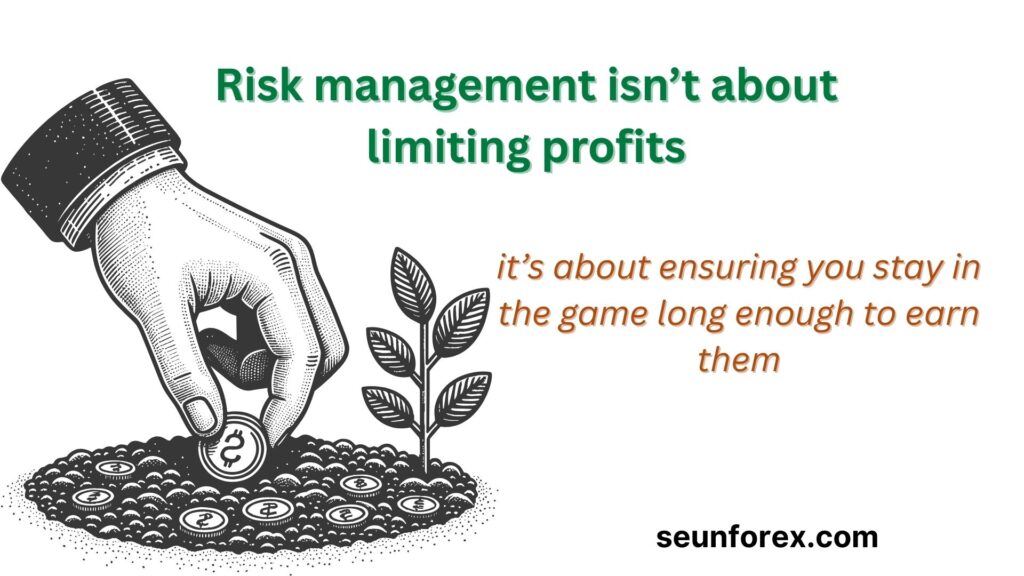
📈 Introduction: The Path to Consistent Growth
Every forex trader dreams of turning their trades into consistent profits, but improvement doesn’t come overnight. Some traders focus only on wins and losses, while the truly successful ones measure progress through discipline, strategy evolution, and emotional mastery.
Tracking your improvement is more than just checking your P&L — it’s about understanding your behavior, decision-making, and strategy execution. As Warren Buffett once implied in his letters to shareholders: it’s better to be approximately right in a good system than precisely right in a flawed one.
In this post, we’ll explore 25 clear signs that indicate you’re improving as a forex trader. Each sign comes with actionable advice, psychological insight, and practical checklists to help you gauge your growth.
“The goal of trading is not to be right every time, but to be consistently profitable.” — Anonymous Trader
🟢 Sign 1: Tracking Performance Consistently
Improvement begins with awareness. Traders who monitor their win rate, risk-reward ratios, and drawdowns over time have a clear view of their progress.
- 📊 Action: Maintain a trading journal detailing entries, exits, and outcomes.
- 🔑 Key takeaway: Awareness builds control; control builds consistency.
🟢 Sign 2: Increasing Win Rate Over Time
A growing win rate shows that your strategy is working and you’re learning from past mistakes.
- ✅ Compare weekly and monthly performance.
- 📈 Look for trends, not single trade results.
- 💡 Pro tip: Focus on quality setups over quantity trades to naturally increase your win rate.
🟢 Sign 3: Maintaining a Positive Risk-Reward Ratio
A positive risk-reward ratio indicates discipline and effective trade management.
- ⚖️ Aim for at least 2:1 — risking 1 unit to gain 2 units.
- 🔄 Review trades where the ratio wasn’t respected and adjust strategy accordingly.
- 💡 Takeaway: Protecting capital is the backbone of long-term improvement.
🟢 Sign 4: Reducing Impulsive Trades
Emotional trading is a common pitfall. If you notice fewer impulsive trades and more planned entries, it’s a sign of maturity.
- 🧘♂️ Pause and evaluate setups before executing.
- 📓 Journal your emotional state during trades.
- 💡 Key insight: Emotional control separates amateurs from professionals.
🟢 Sign 5: Evolving Trading Strategies
The markets are dynamic; improvement means your strategies adapt as you are improving as a forex trader.
- 🔄 Regularly review what works and what doesn’t in your trades.
- 📝 Incorporate lessons from losing trades to refine your system and ensure you are truly improving as a forex trader.
- 💡 Pro tip: Static strategies lead to stagnation; evolving your approach is how you show you’re improving as a forex trader consistently.
🟢 Sign 6: Learning from Losses
Every losing trade is a lesson in disguise. Traders who analyze their mistakes and extract actionable insights are steadily improving as a forex trader.
- 🔍 Review every loss: what went wrong and why.
- ✏️ Note patterns in your journal to avoid repeating them and track your journey of improving as a forex trader.
- 💡 Key takeaway: Losses aren’t failures; they’re feedback for smarter future trades, a crucial step in improving as a forex trader.
🟢 Sign 7: Handling Volatility Calmly
Markets are unpredictable. Traders improving as a forex trader navigate sudden price swings without panic or rash decisions.
- 🧘♂️ Practice breathing techniques and mental resets before entering volatile trades.
- 🏦 Keep position sizes small enough to avoid stress-induced mistakes while improving as a forex trader.
- 💡 Tip: Calm execution during volatility is a clear sign that you are improving as a forex trader and building confidence and discipline.
🟢 Sign 8: Managing Emotions Under Pressure
Fear, greed, and excitement can sabotage trades. As you continue improving as a forex trader, your emotions no longer dictate entries or exits.
- 📓 Track emotional states alongside trade results to confirm you are improving as a forex trader.
- 🎯 Use checklists to ensure logic drives decisions, not feelings, reinforcing your progress in improving as a forex trader.
- 💡 Insight: Emotional mastery is as crucial as technical knowledge in the journey of improving as a forex trader.
🟢 Sign 9: Sticking to Trading Plans
A strong trading plan is your roadmap. If you follow your plan consistently rather than deviating for “gut feelings,” you’re demonstrating significant growth.
- 📝 Create clear entry, exit, and risk management rules.
- 🔄 Review adherence after each trading session.
- 💡 Key point: Discipline in following your plan beats occasional luck.
🟢 Sign 10: Using Journals to Track Trades

Maintaining a journal is a hallmark of professional traders. It’s not just about numbers; it’s about reflecting on strategy, psychology, and market behavior.
- 📊 Record entries, exits, reasons for the trade, and emotional state.
- 📈 Regularly analyze trends in your performance and mindset.
- 💡 Takeaway: Journaling transforms experiences into structured learning, accelerating improvement.
🔗 Learn More About Emotional Management and Trading Psychology
For a deeper dive into emotional management and surviving difficult periods, read:
Survive Drawdowns and Emotional Storms
🟢 Sign 11: Recognizing Repeating Mistakes
Improving traders start to notice patterns in their losing trades. Recognizing repeated errors is a critical step toward growth.
- 🔍 Analyze recurring mistakes in your journal.
- ✏️ Adjust strategies to prevent repeating them.
- 💡 Key takeaway: Awareness of repeated mistakes allows you to break bad habits before they become costly.
🟢 Sign 12: Adapting to Market Conditions
Markets constantly change. Traders who improve are flexible — they adjust strategies based on volatility, trends, and news rather than sticking rigidly to one approach.
- 🔄 Review performance under different market conditions.
- 📈 Modify indicators, risk levels, or timeframes to fit the current market.
- 💡 Insight: Adaptability is a hallmark of long-term success.
🟢 Sign 13: Understanding Trade Setups Deeply
Improving traders move beyond surface-level understanding. They know why a setup works, not just that it does.
- 📚 Study patterns, indicators, and market psychology behind each setup.
- 📝 Document reasons for entering trades in your journal.
- 💡 Tip: Deep understanding reduces reliance on luck and increases confidence in execution.
🟢 Sign 14: Executing Trades with Discipline
Discipline is the bridge between strategy and results. If you’re executing trades exactly according to plan, you’re on the path to improvement.
- ✅ Avoid entering trades outside your rules.
- 🎯 Follow your entry, exit, and stop-loss criteria precisely.
- 💡 Takeaway: Discipline converts plans into consistent profits.
🟢 Sign 15: Building Confidence in Your Edge
Confidence grows when you trust your strategy and backtested system. Improved traders no longer second-guess setups when the conditions are right.
- 📊 Test strategies rigorously before live trading.
- 💭 Reflect on past successes to reinforce belief in your method.
- 💡 Key point: Confidence paired with discipline produces consistent results.
🟢 Sign 16: Evaluating Trade Outcomes Objectively
Improving traders analyze both winning and losing trades without bias or excuses. Objectivity is key to growth.
- 🔍 Review trades based on data, not emotions.
- ✏️ Note lessons learned regardless of outcome.
- 💡 Key takeaway: Objective evaluation turns every trade into a learning opportunity.
🟢 Sign 17: Improving Timing on Entries and Exits
Successful traders refine the timing of their trades. If you’re entering and exiting more precisely, you’re improving your execution skill.
- 📊 Track entry/exit points and compare with optimal setups.
- 🔄 Adjust strategy or timing to maximize efficiency.
- 💡 Tip: Better timing reduces drawdowns and increases profit potential.
🟢 Sign 18: Keeping Realistic Profit Expectations
Improving traders set achievable goals rather than chasing unrealistic gains. This mindset prevents overtrading and emotional mistakes.
- 🎯 Focus on consistent, small wins rather than rare home runs.
- 📝 Set weekly and monthly targets based on historical performance.
- 💡 Insight: Realistic expectations sustain long-term growth and prevent burnout.
🟢 Sign 19: Avoiding Overtrading
Overtrading is often a symptom of impatience or emotional decision-making. Traders showing improvement resist the urge to trade excessively.
- 🧘♂️ Stick to quality setups only.
- 📓 Journal all trades to monitor frequency.
- 💡 Key point: Fewer, high-quality trades often outperform many impulsive ones.
🟢 Sign 20: Accepting Small Losses Gracefully
Improving traders understand that small, managed losses are part of the game. Acceptance prevents emotional escalation and larger mistakes.
🟢 Sign 21: Seeking Continuous Learning
Improving traders are always students of the market. They read, study, and practice new strategies to stay ahead.
- 📚 Dedicate time to trading books, webinars, and courses.
- 🔍 Analyze new tools or techniques before applying them.
- 💡 Key takeaway: Lifelong learning keeps your edge sharp and adaptable.
🟢 Sign 22: Incorporating Feedback from Mentors
Listening to experienced traders and mentors accelerates your growth. Improvement often comes faster when guidance is applied thoughtfully.
- 📝 Take notes during mentorship sessions.
- 🔄 Apply lessons to your own trades, then review outcomes.
- 💡 Tip: Constructive feedback turns potential weaknesses into strengths.
🟢 Sign 23: Staying Patient for Setups
Improved traders wait for the right trade setups instead of forcing trades out of impatience.
- 🧘♂️ Be willing to skip setups that don’t meet criteria.
- 📊 Track how waiting impacts overall performance.
- 💡 Insight: Patience reduces mistakes and improves risk-reward outcomes.
🟢 Sign 24: Practicing Risk Management Rigorously

Risk management is the cornerstone of trading improvement. You protect capital and minimize losses by applying strict rules.
- ⚖️ Always use stop-losses and position sizing.
- 🔄 Adjust risk parameters based on market volatility.
- 💡 Key point: Consistent risk management ensures longevity in trading.
🟢 Sign 25: Feeling Less Anxiety About Trading Outcomes
Improvement shows in your mental state. You no longer panic over losses or overexult over wins. Emotional balance reflects mastery.
- 🧠 Monitor your emotional response to trades.
- 📝 Reflect in your journal about stress levels and reactions.
- 💡 Takeaway: Reduced anxiety allows for clearer decision-making and consistent growth.
🔹 Conclusion: Embrace the Journey of Improvement
Improving as a forex trader is a multi-dimensional journey — it’s not just about profits, but about discipline, psychology, strategy, and self-awareness. By tracking your performance, refining your strategies, managing risk, and controlling your emotions, you can gradually evolve into a consistently profitable trader.
“Success in trading is measured not by avoiding losses, but by growing smarter, more disciplined, and emotionally resilient with each trade.” — Anonymous Trader
🏁 Final Takeaways: Your Path to Consistent Growth
Improving as a forex trader is a journey, not a destination. By following the 25 signs outlined above, you’re actively working on discipline, strategy, risk management, and emotional mastery.
Here’s what to remember:
- 📊 Track Performance: Regularly monitor your trades, win rates, and risk-reward ratios to gauge real improvement.
- 🔄 Adapt Strategies: The market evolves — your strategies must evolve too to stay effective.
- 🧠 Master Psychology: Emotional control, patience, and composure are as important as technical skills.
- ⚖️ Practice Risk Management: Protect your capital through position sizing, stop-losses, and disciplined execution.
- 📓 Learn Continuously: Journal trades, study patterns, and integrate lessons from losses to keep improving.
- 🎯 Focus on Consistency: Small, steady wins compound into long-term success — don’t chase perfection or unrealistic profits.
For additional guidance on managing emotions, surviving drawdowns, and building consistent performance, check:
Survive Drawdowns and Emotional Storms